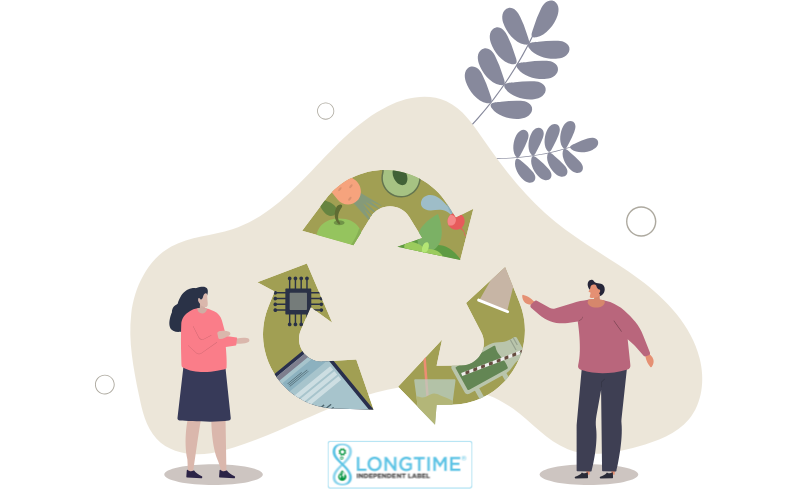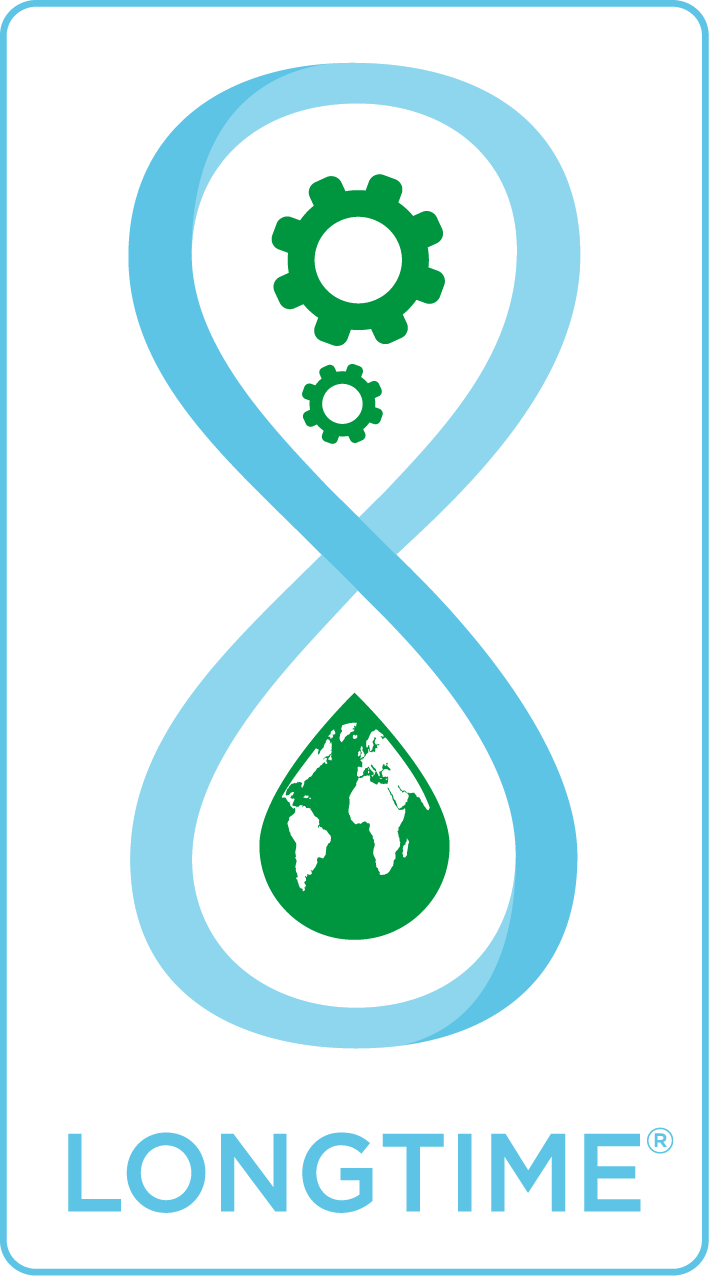Responsible Consumption: A Deep Dive into Key Concepts and Their Impact
LONGTIME® is committed to promoting sustainable practices, and understanding responsible consumption is essential for a more sustainable future. In this article, we will explore the connections between responsible consumption, the Sustainable Development Goals (SDGs), and how our individual choices impact the planet. Find out all about it here.
What Is Responsible Consumption?
Responsible consumption involves making informed decisions that consider the environmental, social, and economic impacts of our choices. This includes looking at the entire lifecycle of a product—from material sourcing to disposal—and understanding how these choices contribute to reducing waste, conserving resources, and fostering sustainability globally.
Key Definitions:
- Consumption: The use of goods and services.
- Sustainable consumption: Choosing products and services that minimize environmental impact, support fair labor practices, and efficiently use resources.
Why Is Responsible Consumption Important?
The importance of responsible consumption cannot be overstated, especially as the world faces global challenges such as resource depletion, waste accumulation, and climate change. The UN’s SDGs, particularly SDG 12—Sustainable Consumption and Production, aim to reduce resource use and improve production and consumption practices worldwide.
Responsible consumption addresses:
- Global challenges: Increasing consumption per capita and a rising population in developing countries are driving environmental degradation and resource depletion. In 2023, global material consumption reached 100 billion tons, with projections suggesting it could more than double by 2050. If the world’s people do not adopt more sustainable habits, the percent of global resources used will continue to grow unsustainably.
- Waste reduction: Billions of tons of waste are generated each year, much of it from single-use products. Responsible consumption helps reduce waste and supports a circular economy.
- Climate change: The choices we make—what we consume and how we dispose of it—directly contribute to greenhouse gas emissions and global warming. Responsible consumption helps reduce carbon footprints and mitigate climate change.
- Equity and education: In developing countries, responsible consumption can help balance resource access, promote social equity, and reduce waste.
National and International Consumption Patterns
Both national and international consumption play significant roles in shaping global resource use and environmental impact. In wealthier countries, consumption patterns tend to be higher, with people often consuming more goods and services. As national economies grow, the pressure on natural resources increases, resulting in greater carbon footprints and waste generation. International consumption trends also highlight how globalization and the movement of goods across borders contribute to higher levels of material consumption, increasing resource extraction and energy use.
Countries with higher levels of industrialization and economic development contribute disproportionately to global environmental degradation, but they also have the power to set examples for more sustainable practices. On the other hand, developing nations are seeing rapid growth in consumer demand, which can lead to both opportunities and challenges. The growing middle class in countries like China, India, and Brazil, for example, is leading to increased consumption, while at the same time, these nations are investing in sustainable production and eco-friendly technologies. By promoting responsible consumption on both national and international levels, nations can work toward reducing the negative impact of consumption on the planet while fostering economic growth.
How Can Individuals Practice Responsible Consumption?
Individuals can take action by adopting habits that not only benefit their households but also contribute to global sustainability. Here’s how:
- Choosing Sustainable Products: Support products that are made with ethical labor practices, designed for longevity, and can be recycled or repurposed. Look for certifications like LONGTIME®, which ensure products meet high sustainability standards.
- Minimizing Waste: Adopting zero waste habits, such as recycling, reusing packaging, and reducing food waste, helps curb the global waste problem.
- Supporting Local and Ethical Businesses: By buying local products, consumers can support small businesses and reduce the carbon footprint associated with shipping goods globally.
- Recycling and Reusing Materials: Sorting material waste and choosing second-hand goods helps reduce resource consumption and waste.
- Educating and Sharing Knowledge: Education is essential for raising awareness about the importance of responsible consumption. Governments and organizations use data to measure consumption trends and guide policies.
Connecting Responsible Consumption to SDG 12

Responsible consumption is central to achieving SDG 12. This goal calls for resource efficiency, waste reduction, and sustainable production practices. It aims to ensure that, by 2030, countries develop policies and regulations that encourage consumption patterns that promote environmental protection and fair social practices.
SDG 12 Key Targets and Indicators:
- Target 12.1: Implement the 10-year framework of programs on sustainable consumption and production, with a focus on developing countries.
- Target 12.2: Achieve the sustainable management and efficient use of natural resources by 2030.
- Indicator 12.1.1: Number of countries with sustainable consumption and production policies.
- Indicator 12.2.2: Domestic material consumption per capita, and domestic material consumption per unit of GDP.
The Impact of Consumer Choices on the Environment
Every individual’s consumption choices have an impact. When these decisions are scaled up, they contribute significantly to global material consumption and environmental degradation. However, responsible consumption can help minimize these effects:
- Resource conservation: By choosing products with longer life cycles, consumers reduce the need for raw material extraction. For example, recycling one ton of paper saves 17 trees and 7,000 gallons of water.
- Carbon footprint: If each individual in developing countries adopted sustainable practices, it could reduce global CO2 emissions by billions of tons. A simple change, like switching to more efficient appliances or reducing meat consumption, can have a significant effect.
Policies and Initiatives Supporting Responsible Consumption
Governments and organizations are adopting policies to encourage sustainable production and consumption:
- Circular Economy: Many countries, including France, have passed laws encouraging circular economy practices. The AGEC Law (Anti-Waste for a Circular Economy) promotes recycling, reuse, and responsible consumption by enforcing product repairability standards.
- Corporate Responsibility: Corporations are also aligning their practices with SDGs. Many companies now offer eco-labels and certifications to highlight products that meet sustainable sourcing and sustainability criteria.
FAQ: Responsible Consumption
What does responsible consumption mean?
It means being mindful of how products are produced, used, and disposed of, with a focus on minimizing environmental impact and supporting fair labor practices.
How can responsible consumption help the environment?
By reducing waste, conserving resources, and supporting companies that use sustainable practices, responsible consumption helps reduce carbon footprints and promotes a healthier planet.
How do developing countries benefit from responsible consumption?
Responsible consumption in developing countries can help balance resource access, improve living conditions, and create more sustainable economic growth by reducing waste and conserving resources.
What is SDG 12 and why is it important?
SDG 12 focuses on ensuring sustainable consumption and production patterns. It aims to reduce resource use, waste, increase recycling, and promote sustainability in all sectors.
How Can YOU Make a Difference?
Our everyday choices have a profound impact on the planet. By adopting responsible consumption practices, we not only help conserve natural resources but also support social equity and foster long-term environmental benefits. Let’s commit to making informed decisions—whether it’s choosing sustainable products, reducing waste, or supporting policies that promote sustainability—and contribute to achieving SDG 12. Together, we can build a more sustainable, responsible world for future generations.
As we look toward the future, embracing new approaches to responsible consumption is essential for achieving lasting environmental change. Energy efficiency plays a crucial role in this shift, as reducing energy consumption helps mitigate climate change and conserves valuable resources. By making good choices—from selecting energy-efficient appliances to supporting sustainable energy sources—we contribute to a collective effort for a greener planet. The United Nations continues to drive global initiatives, such as the SDGs, which guide nations toward responsible consumption and production practices. These actions, supported by individuals and policymakers alike, are fundamental to creating a more sustainable world.
